The pink hues of hawa mahal’s facade brings many thoughts into the mind – the simple and elegant beauty of the palaces of Rajasthan, Jaipur’s fetish with the deep reddish hues carefully preserved over a century, the confined lives of women in the palaces and mostly – the ultimate symbol of Rajasthan Tourism. On my first visit to Rajasthan, Hawa Mahal was in the beginning phase of a long lasting renovation, taking its time as any government project would. About four years later, on my second visit a month ago, the process was finally complete. It was the right time to be there, before the paint faded, before coloured glasses lost its sheen, before its fountain left to die and before the vandals arrived to scribble the details of their love life. The insides of the Hawa Mahal were gleaming with fresh paint, coloured glass (or are they stained glasses? there is no easy way to find out) and spotless interiors – as if the Maharaja had just gifted the palace of winds to the members of his harem.
We loved it, and almost refused to leave. A spree of photography lasted for four hours. We left, only to allow some time for other charms of Jaipur’s old city, but haven’t had enough of the Mahal yet. Here is a compilation of images made in and around Hawa Mahal in this brief period. But Hawa Mahal deserved more time; and more, better, beautiful images.
The typical image of Hawa Mahal in tourist brochures shows it standing alone and isolated, as if it is located in a pristine undisturbed location, waiting for you to discover it. Far from so, it is right next a busy road. A national highway to be precise. In fact, the whole idea of building Hawa Mahal was to let the royal women a glimpse into the outside world, the city’s busy life, and processions during the festival. And it is this reason, that the windows of Hawa Mahal face a busy street but the entry to it is from the other side. It is a relatively lackluster entrance that doesn’t give clues to all the glory that the palace possesses.
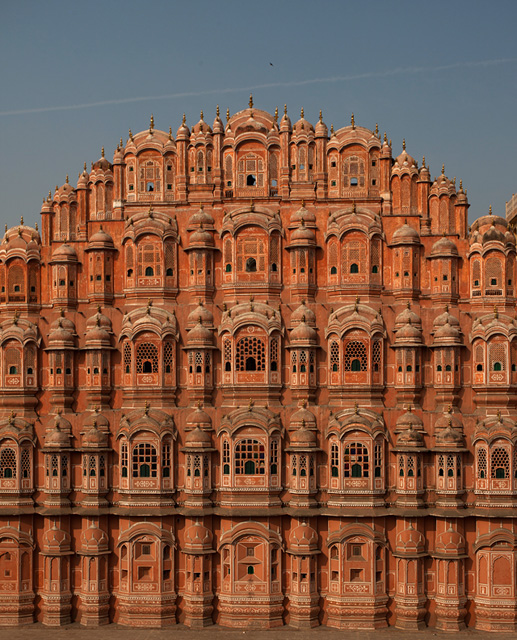
The facade of famous Hawa Mahal – the palace of winds
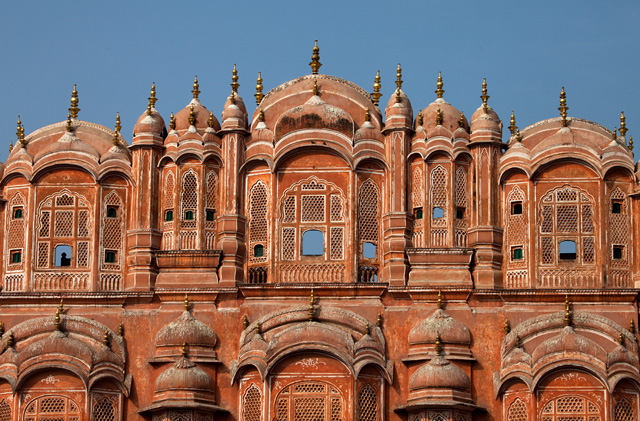
A closer look at the facade.
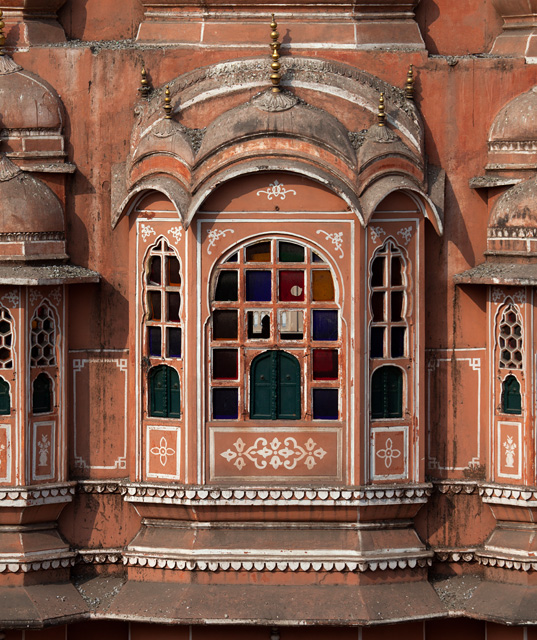
One of the colourful windows of Hawa Mahal that are spread over five stories. The colours of the glass are not apparent here; see the images from inside Hawa Mahal below.
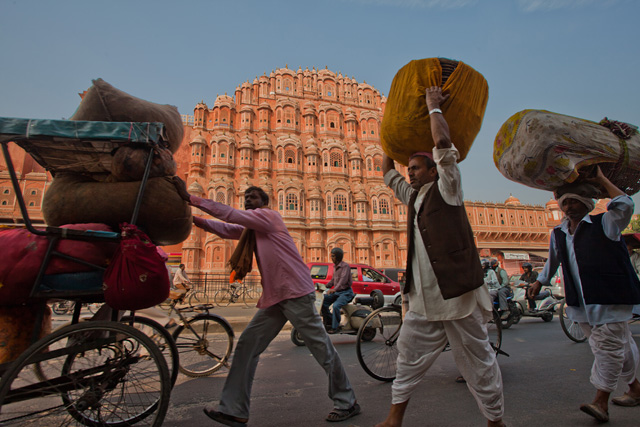
Life goes on the street in front of Hawa Mahal, not stopping by to admire the beauty of the palace that is an everyday affair for the people of Jaipur.
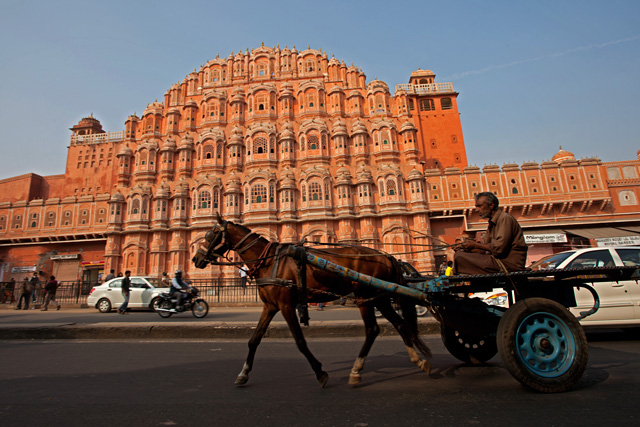
Life goes on in front of Hawa Mahal, on the busy National Highway 8.
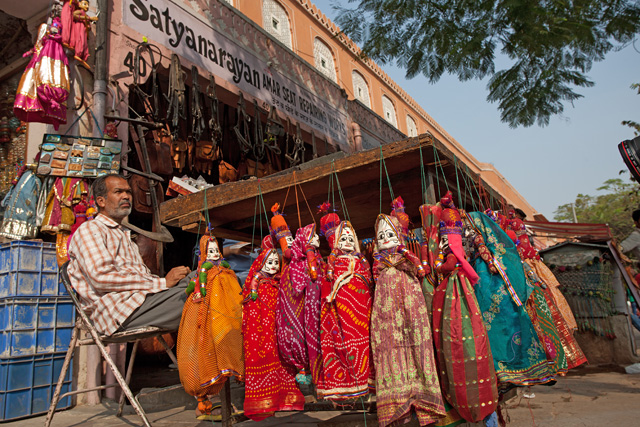
A shop selling wares for tourists near Hawa Mahal.
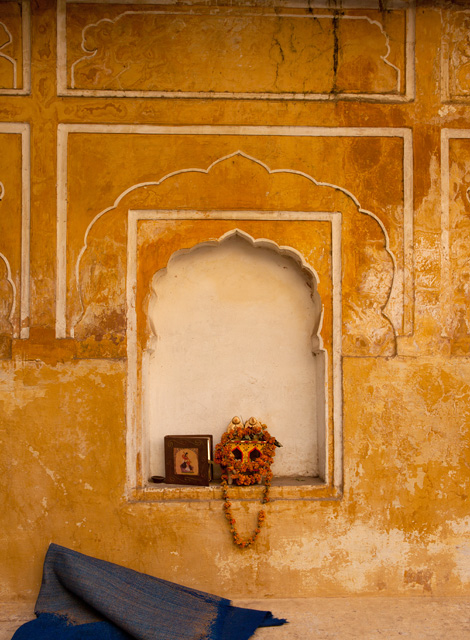
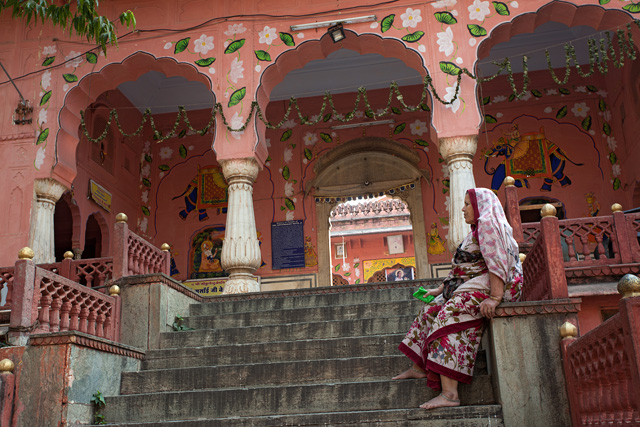
At the quiet and peaceful alleys behind Hawa Mahal.
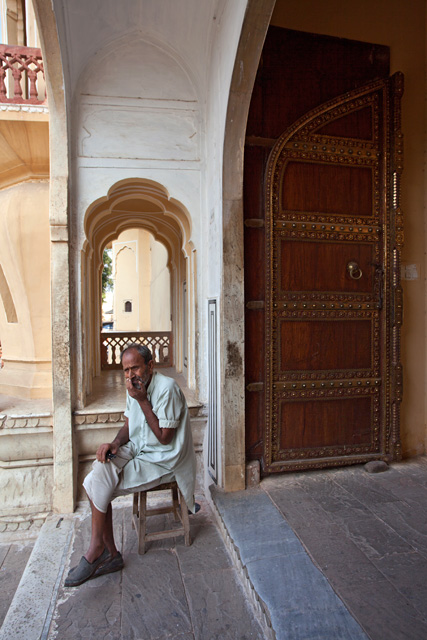
The relatively lackluster entrance to go inside Hawa Mahal is on the side opposite to its colourful facade. On entering, the inside appears ordinary at first, until you go past a few doors.
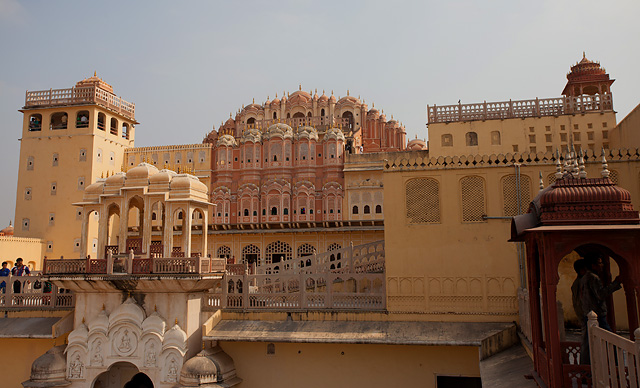
The arches and the galleries inside Hawa Mahal are as charming as its facade is.
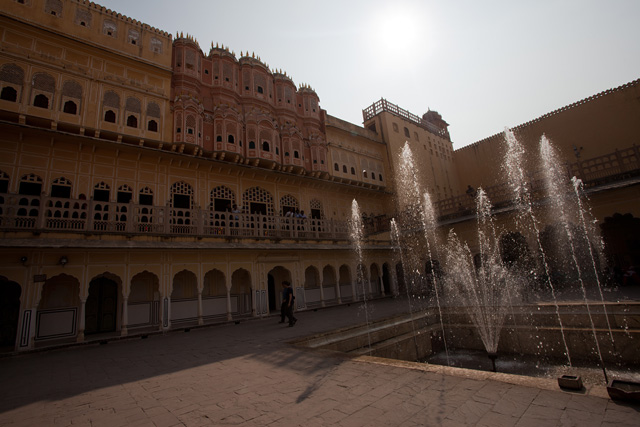
The fountains add to the glory of the building. The morning of our visit to Hawa Mahal, we had seen a photograph in the newspaper showing the springing fountains. But to our disappointment, they were turned off when we arrived. As luck would have it, someone turned it on just for a minute, barely long enough for me take this picture.
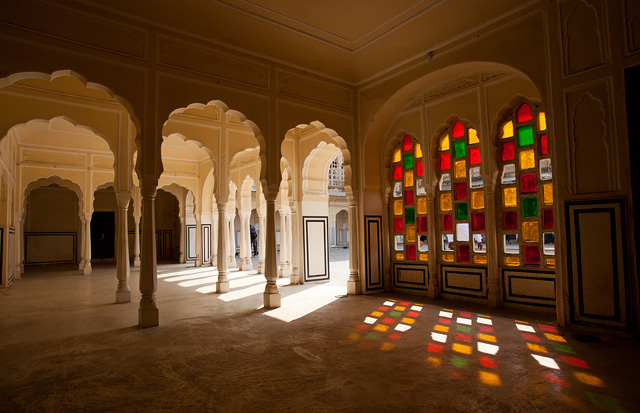
I almost missed this hall with colourful glass windows, located on one side of the entrance. It would have been a great loss, not seeing this.
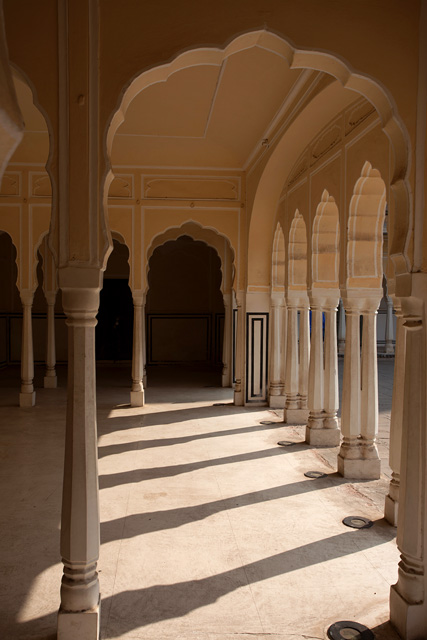
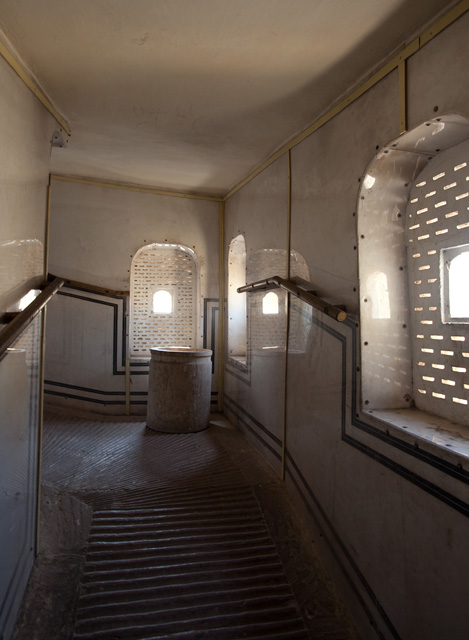
Play of light on the ramp leading up.
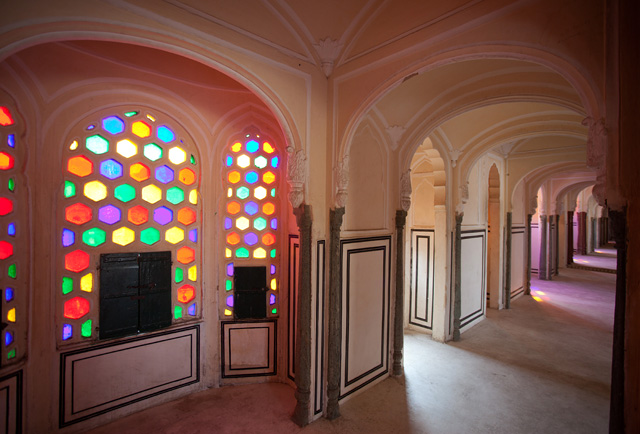
The galleries on the upper floors.
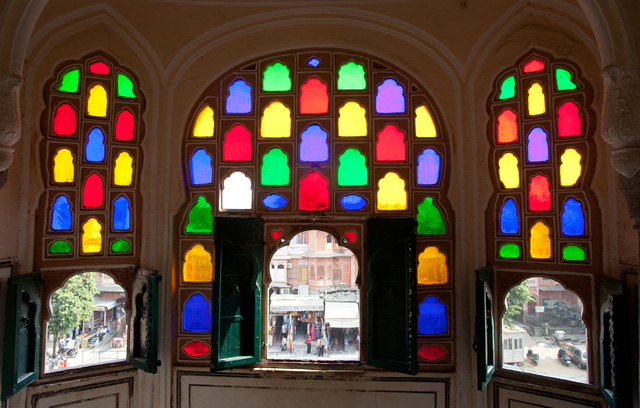
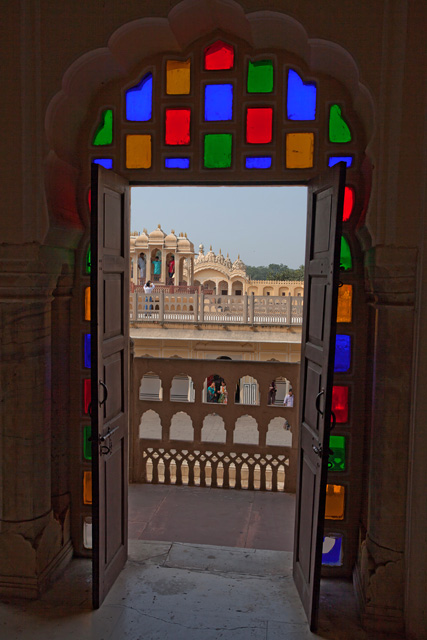
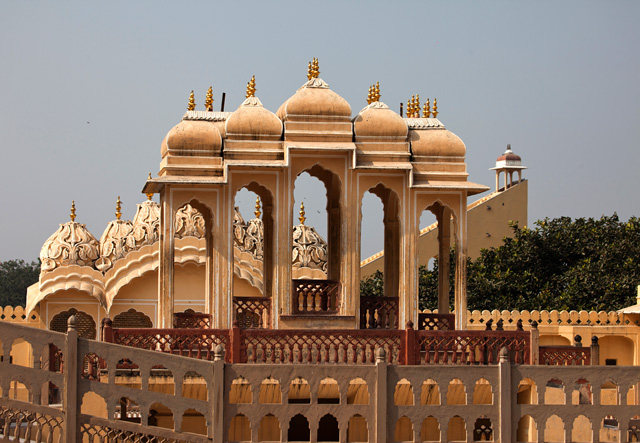
The insides of Hawa Mahal, seen from the first and second floor galleries.
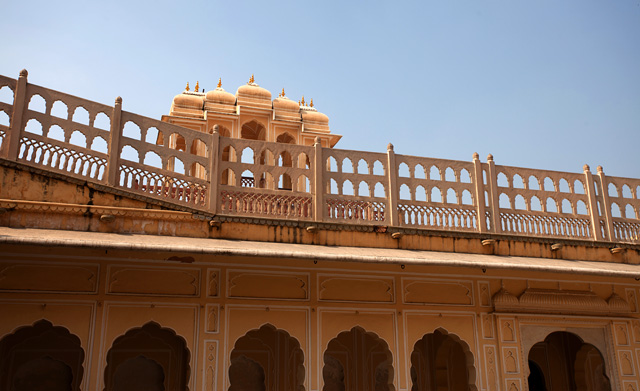
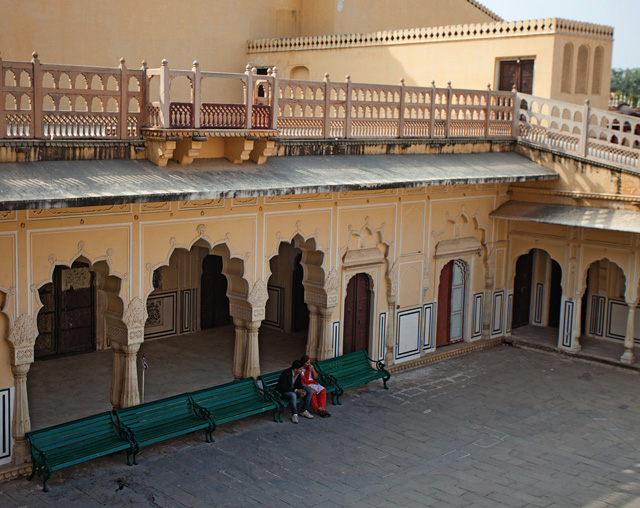
* This article was earlier published in The Business Entrepreneur magazine.
* Join me on a photography-centric tour to Rajasthan in the last week of November
As my plane hovered over Jaipur City waiting for signal to land, I looked down from the tiny window past the obtrusive wing for my first sight of the desert capital. The view from the top makes it evident that Jaipur is a well planned city. The walled Old City is neatly divided into small blocks with perfectly straight roads crisscrossing them. A few big landmarks like the City Palace and Tal Katora Lake break the monotony and uniformity, but they gel with their surroundings like an artist’s deliberate strokes that enhance a section of the canvas.
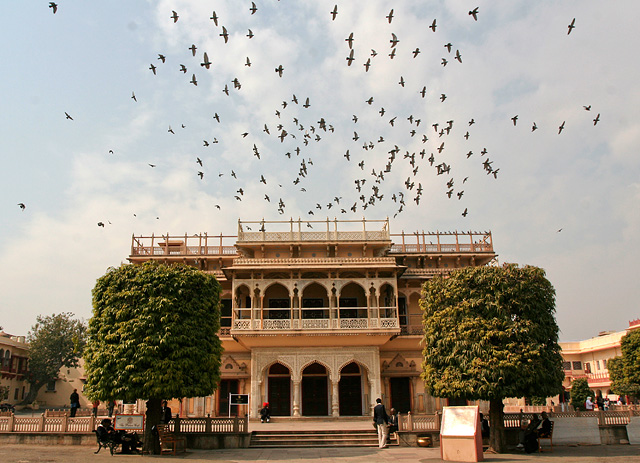
Like most cities with a history that goes back a few centuries, Jaipur is a divided world of old and new. What is now called the old city was build nearly three hundred years ago, when Maharaja Jaisingh II decided move his capital from nearby Amber. He took keen interest in designing and planning the new abode of his people, which explains the well aligned square blocks seen from a bird’s-eye view. A thick wall was build around the city to secure it from invading neighbours, which still survives in parts today.
More than hundred years after the city was built, it received a new artistic infusion when Raja Ram Singh decided to have the whole city painted pink in a gesture to welcome the visiting Prince of Wales. The tradition of pink colour has been preserved even today as it welcomes travellers from across the world, earning it the name ‘pink city’.
The main streets of Old City can surprise even the best informed traveller who sees every building painted in a dark hue of pink. Every shop on the street, whether they sell groceries, clothes or mutual funds, all have the same shape, size and colour. They all look so alike that it requires prominent numbering to distinguish one from other. But order is distinctly broken by occasional shop owners. Modern corporations, ever conscious of an image and with pressures to build their brands, have tried to break out of the monotony and have raised sleek colourful signboards in front of their offices and sales counters, deviating from traditional and lackluster signs in front of all other shops. Perhaps the pink palettes of Jaipur may not survive democracy for very long – it takes a monarchy to bring an order of such degree and have no one question it.
Perhaps the best place to get a good glimpse of Old City is from Iswari Minar Swarg Sal, a tall minaret that offers uninterrupted views. I entered the minaret and climbed up slowly through a helical ramp with tiny windows in every floor that brings in only a little light. The only sign of life in the minaret was pigeons cooing from their roost in the window sill. At the top of the minaret is an open balcony with all-round view of the city. Standing up there, I could see the sprawl of Jaipur – the Aravali Hills spreading to the east limiting the growth of Old City and the plains to the west where the new city is growing quickly. It is easy to spot the major edifices of the old city – Hawa Mahal and City Palace that stand much taller than the two-storey buildings that surround them.
Jaipur’s City Palace, the largest of the monuments in the heart of the walled city, epitomizes the pink city with its long walls painted pink. I entered the palace complex through a narrow gate that isolates the area from traffic, noise and the rush outside. The complex is a large area with empty, wide alleys and open spaces. Large gates with tall arches divide sections of the complex, with fluttering pigeons occupying every inch of free space on the top of the arches. Once in a while they rush out of their perches with loud flutter of wings, collectively strong enough to create small local currents of wind. The amiable Marwaris feed the pigeons generously, letting them thrive and grow plump in the quarters of Old City.
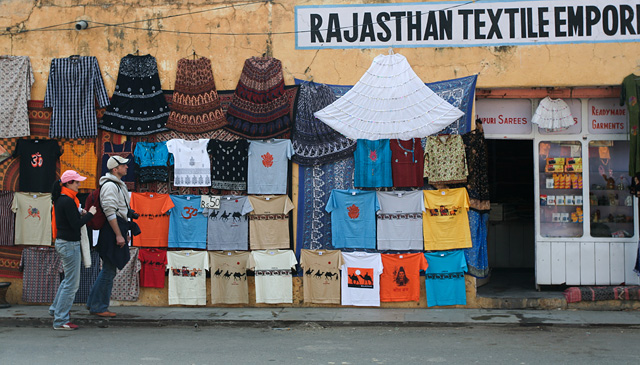
The Palace doubles up as a showcase of the culture and traditions of Rajasthan. A snake charmer welcomes the visitors at the gates with his snake-in-the-box, blowing his pungi and making the snake raise its hood to charm the tourists. It works well. Hoards of tourists from the west who have been oversold with stories of snake charmers, rope-tricksters and elephant riders, tout their camera and smile with a triumph of having seen the India of their conception.
The interiors of the palace are much peaceful, especially for someone who has walked through the rush of the main roads outside. The spacious courtyards can take plenty of tourists and can still feel empty. I walked past Mubarak Mahal – the welcoming hall, the art museums, the arms display and spent some time admiring the large silver pots placed in Diwan-i-Khas. The pots hold Guinness Record for being the largest silver vessels in the world, and were used by King Sawai Madho Singh to carry the waters of Ganga wherever he went. Apparently he would not drink from a source other than the holy river.
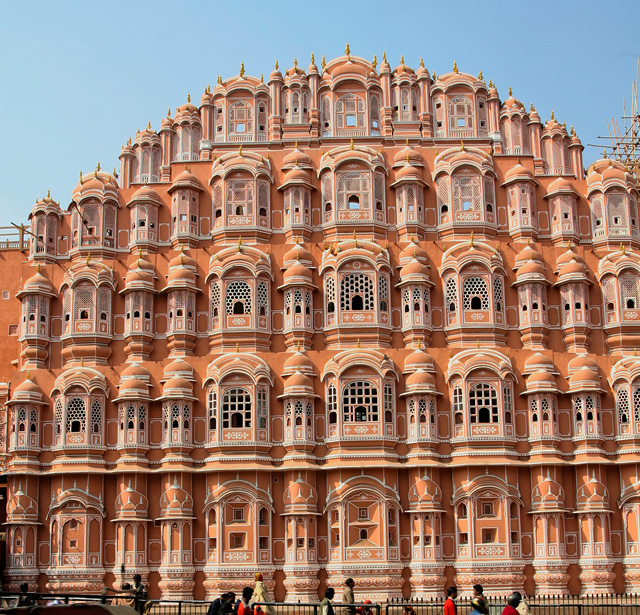
Not for from City Palace is Hawa-Mahal, another pink structure that epitomizes the architecture of Jaipur. Hawa Mahal was built to provide a platform for the women of the palace to see processions passing by the streets during festivals. The Lonely Planet quotes Hawa Mahal as an “extra-ordinary fairy tale”, which is evident on looking at its tall, pink façade with a series of decorated windows. The photogenic outer wall facing the road has a celebratory feel with their bright pink painting and patterns on the windows, earning it a rightful fame. But inside, it is no more than a maze of insipid rooms with peeling plasters, and small windows meant to isolate the royal women with rest of the world.
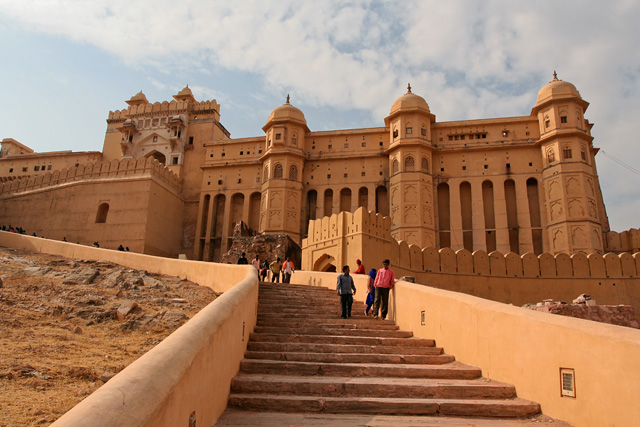
The predecessor to City Palace is Amber Fort, from where the kings had once moved to Jaipur. On the way to the fort, which is a short thirty minute drive from Hawa Mahal, the bustle of the city gives way to a dense pack of trees that now stood bare in the dry winter. But the winding road going up and down through the thick forest is perhaps beautiful and lush green in the monsoons months.
Amber Fort is located on the top of a hill and dominates a long ridge. Standing in a valley and surrounded by fortified hills all around me with a majestic fort on one side, I was impressed by the great effort put by the rulers of Jaipur to protect themselves from possible conflicts. A large tank at the base of the hill matches the fort in size and adds to its beauty, perhaps serving as a source of water for people of the city in the past.
On the way back from the palace, I stopped briefly to watch the golden rays of evening sun fall on Jal Mahal, a small palace built in the middle of Man Sagar Lake. The palace is now left unattended for such a long time that trees have grown over the palace building. It is a sight of nature dominating over man’s creation when allowed to flourish without any interference.
On the way back to my hotel in the evening, I passed through one of the many gates of the Old City that have still survived and marks the separation between old and the new parts of Jaipur. While the Old City has resisted the change over centuries and has steadfastly remained as an icon of the days of the Rajas, the new city symbolizes the new India with its swanky hotels, tall apartment buildings, malls and glass facades. While Jaipur is still not chaotic and disordered like many of India’s large cities, it does seem to be a far cry from the immaculately planned blocks and boulevards I saw in the old city. Going from one side of the gate to the other was like returning to present after a brief journey back in time by two-hundred years.
Forts and walls that go on as far as the ridges of the hills that contain them, red sun setting over orange sand dunes, slippery grains of sand slipping through the feet, starry nights in the middle of the desert whose silence is occasionally interrupted by the camel’s bells, orange turbaned men playing flute and traditional ravan hatha, making the little dolls dance to the tune of soulful music, children dancing to the voices of old men wearing colourful clothes, women in red robes and long skirts walking gracefully with a pot of water leaving behind the sonorous sounds of anklets, temples painted with playful acts of young Lord Krishna and palaces where opulence can’t be bettered. That’s just a few glimpses of what Rajasthan has to offer us, and what we are going to see and photograph. Our photography tour of Rajasthan will leave you lingering for more, and the pictures we bring back will ensure that the memories will never fade.
Dates
- Ten days and nine nights – 25th November, Friday to 4th December 2011, Sunday.
- Optional extension to Udaipur on 5th December 2011.
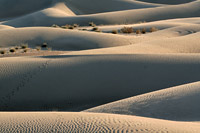
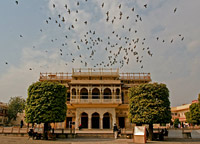
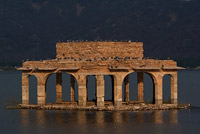
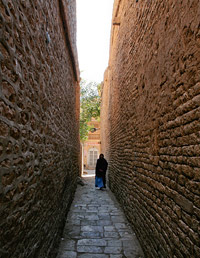
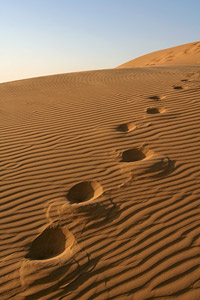
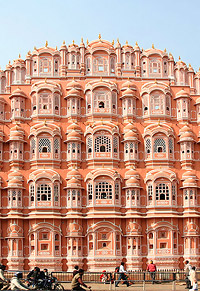
To see full details of the tour and to register, visit Photography Tour to Rajasthan.





























